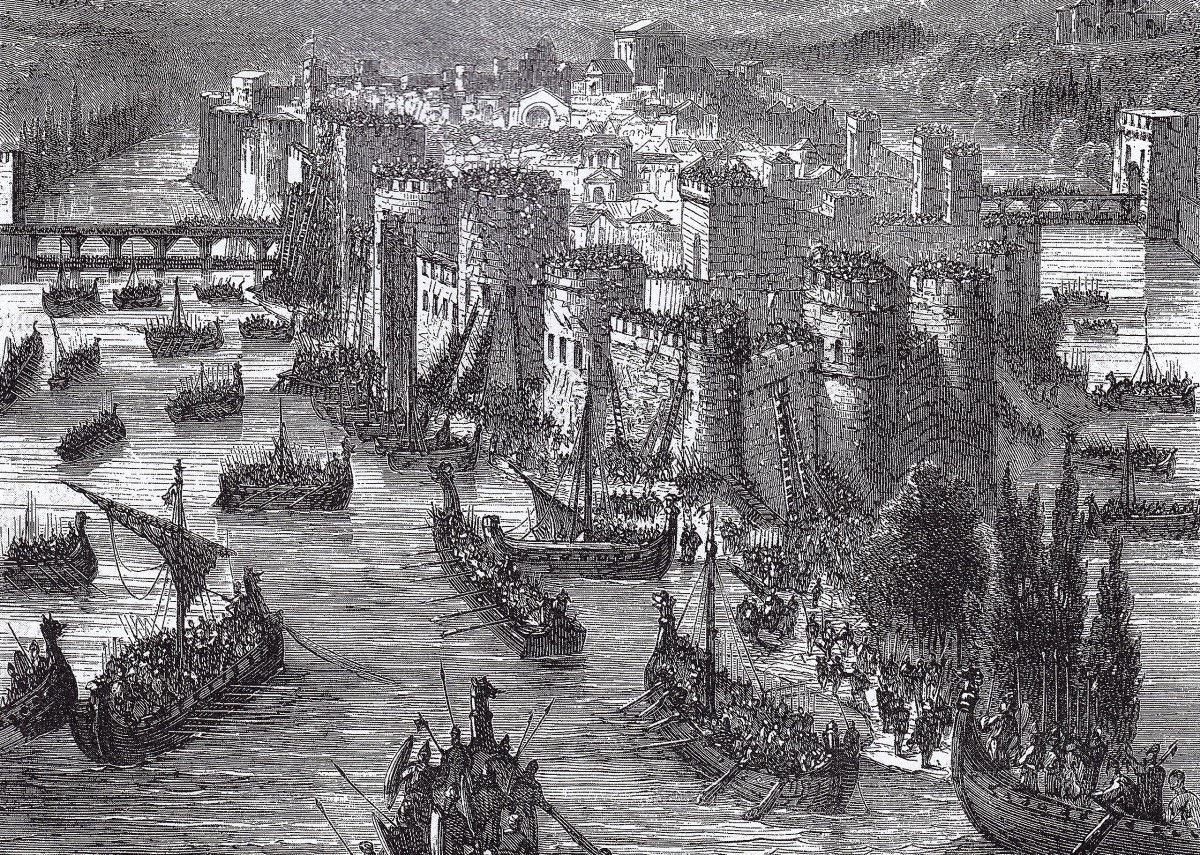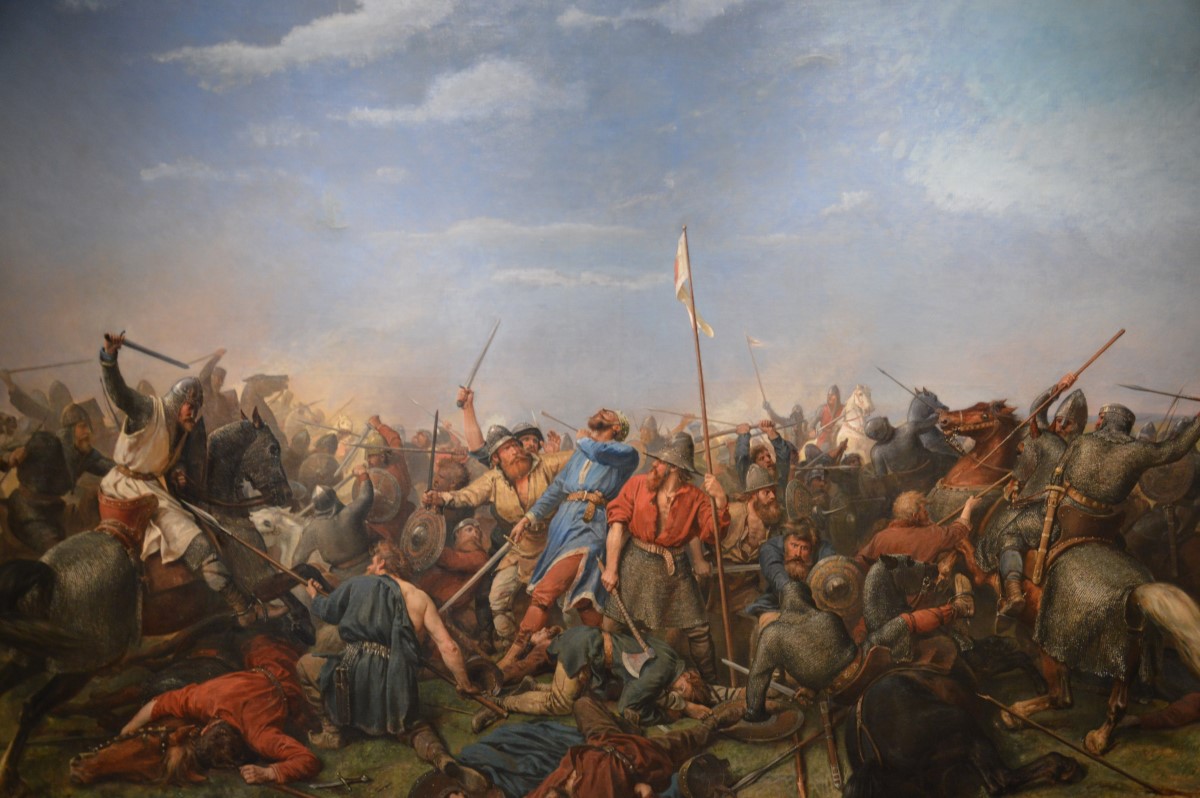


When we think of the Vikings, images of fierce warriors, longships, and horned helmets typically come to mind. In this journal article, we'll delve into the Viking legacy in contemporary Norway, exploring how elements of this rich heritage persist in the country's culture, art, and society.
Who were the Vikings and what did they do?
The term "Viking" refers to a group of people who lived during the Viking Age, which spanned from the late 8th century to the early 11th century. These seafaring Norse explorers and conquerors hailed from the region that includes present-day Norway, Sweden, Denmark, and Iceland.
Viking society was organized into clans or tribes, each led by a chieftain or jarl. These leaders were often responsible for organizing raids and expeditions, and they held significant influence in their communities. Vikings were also skilled farmers, traders, and craftsmen, not just warriors. They cultivated crops, raised livestock, and crafted intricate metalwork, jewelry, and textiles.
Raiding – and trading
Section Type: standardWidthImageS
Drawing depicting Viking ships besieging Paris.

One of the most notable aspects of Viking life was their exploration and raiding activities. The Vikings ventured far from their homelands, using their iconic longships to navigate the seas and rivers of Europe. They reached as far as North America (Vinland) and established settlements in places like Iceland and Greenland. Viking raids targeted various regions, including the British Isles, France, Spain, and even the Mediterranean.
While the Vikings are often remembered for their bloodthirstiness, they were also skilled traders. They established trade routes and settlements throughout Europe, facilitating the exchange of goods, ideas, and culture.
Norse mythology and religion
The Vikings practiced Norse mythology, with gods and goddesses like Odin, Thor, and Freyja at the center of their beliefs. They held sacred ceremonies, built elaborate burial mounds, and left runic inscriptions on stones to honor their deities and commemorate their fallen warriors.
Influence on European history
Section Type: standardWidthImageS
Painting of the Battle of Stamford Bridge between the Norsemen and English in 1066, by Peter Nicolai Arbo.

The Viking Age had a profound impact on European history. Their exploration and settlements left a lasting mark on regions such as the British Isles, where Viking influences are still evident in place names and local traditions. The Norman Conquest of England in 1066, led by William the Conqueror, who was of Viking descent, is a prominent example of Viking influence in European politics.
By the early 11th century, the Viking Age began to wane. Factors such as the spread of Christianity, the consolidation of European kingdoms, and changing economic conditions led to a decline in Viking raids. Some Vikings settled in the lands they had conquered, integrating into local societies, while others continued to explore and trade.
The Viking legacy lives on in modern Norway
Language and names
The Viking influence on the Norwegian language is unmistakable. Many common Norwegian words, as well as place names, are rooted in Old Norse, the language of the Vikings. For instance, words like "fjord" (a narrow inlet of the sea between high cliffs or steep slopes) and "hus" (house) have their origins in Old Norse. Place names like Oslo, Stavanger, and Trondheim reflect the Viking heritage, as these were important Viking settlements. Additionally, many Norwegians bear names with Viking origins, such as Erik, Ingrid, and Bjorn, which can be traced back to Old Norse names.
Viking museums and historical sites
Section Type: standardWidthImageS
Drakkar, the longship of the Vikings, at the Viking Ship Museum.

Norway boasts a wealth of Viking museums and historical sites that offer a glimpse into the Viking era. The Viking Ship Museum in Oslo, home to well-preserved Viking ships, artifacts, and burial mounds, will reopen bigger and better in 2026/7 as the Museum of the Viking Age. The new museum promises to be a one-stop shop for everything Viking.
Other significant Viking sites in Norway include Midgard Vikingsenter in the Borre National Park, which features a large burial ground with Viking-era graves and monumental mounds, and the historical city of Tønsberg, which boasts a rich Viking history.
Viking festivals and reenactments have become popular in Norway, allowing people to immerse themselves in Viking culture. Events like the Stiklestad Viking Festival and the Lofotr Viking Festival offer visitors the chance to witness Viking battles, craft demonstrations, and traditional feasts. These festivals help keep the Viking legacy alive and provide a unique educational experience for both locals and tourists.
Art and literature
Viking themes frequently appear in Norwegian art and literature. Renowned Norwegian artists like Theodor Kittelsen and Edvard Munch have depicted Viking scenes and Norse mythology in their works. Munch's famous painting "The Dance of Life" includes Viking motifs, reflecting his fascination with Norwegian history.
In literature, authors like Henrik Ibsen and Knut Hamsun have explored Viking themes and sagas in their writing. The sagas, epic tales of Norse heroes and gods, continue to captivate readers and serve as a source of inspiration for modern authors.
Viking mythology and religion
Section Type: standardWidthImageS
Painting of Goddess Freyja, by John Bauer.

While Norway is predominantly a Christian country today, elements of Viking mythology and religion persist in cultural practices and festivals. The Norse pantheon of gods, including Odin, Thor, and Freyja, remains a part of Norwegian folklore. Celebrations like Midsummer's Eve (St. John's Eve) are reminiscent of ancient pagan rituals, with bonfires and festivities taking place across the country.
Traditional Viking sports and games have also found a place in modern Norwegian culture. Events like axe-throwing and archery competitions, reminiscent of Viking games and skills, are popular at festivals and gatherings.
Spirit of adventure
Perhaps the most enduring aspect of the Viking legacy in modern Norway is the spirit of exploration and adventure. Norwegians have a deep connection to the sea, and their Viking ancestors' voyages and exploration have influenced the country's maritime culture. Today, Norway continues to excel in activities like sailing, shipbuilding, and Arctic exploration, carrying on the tradition of fearless exploration and discovery.
Section Type: cta
From language and names to museums, festivals, and art, the Vikings continue to play a significant role in shaping Norway's cultural identity. Why not visit the land of the Vikings with SA Expeditions? First peruse our most popular Norway itineraries; then speak to a Destination Expert about crafting your own.


Copyright © 2025 SA Luxury Expeditions LLC, All rights reserved | 95 Third Street, 2nd floor, San Francisco, CA, 94103 | 415-549-8049
California Registered Seller of Travel - CST 2115890-50. Registration as a seller of travel does not constitute approval by the state of California.










